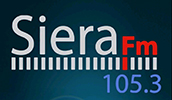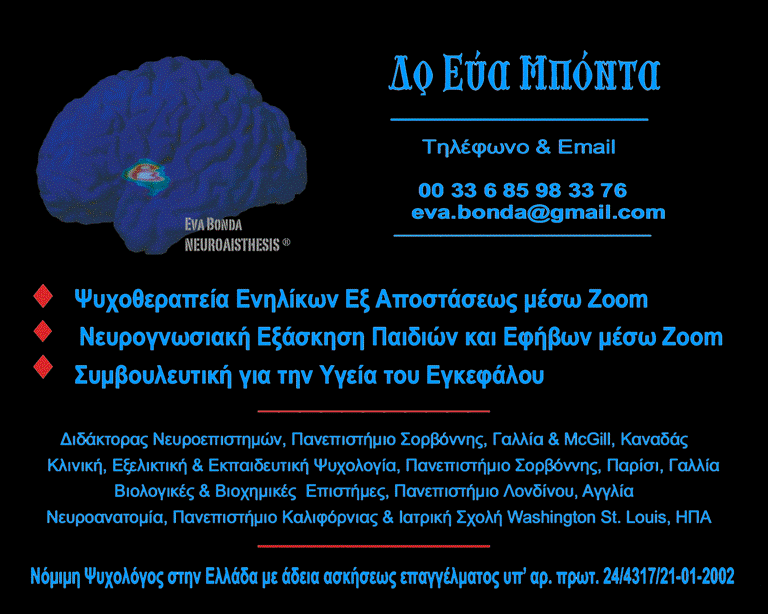Οι ανεξέλεγκτοι, ακούσιοι σπασμοί μπορεί να επηρεάσουν πολλά διαφορετικά είδη μυών του σώματος, οδηγώντας σε πολλά διαφορετικά συμπτώματα.
Οι πιο συχνοί μυϊκοί σπασμοί είναι εκείνοι των σκελετικών μυών και είναι συνήθως οφείλονται σε υπερβολική καταπόνηση, αφυδάτωση και σε ανισορροπία ηλεκτρολυτών. Ο σπασμός συμβαίνει απότομα, είναι επώδυνος, αλλά και, συνήθως, σύντομος. Μπορεί να βρείτε ανακούφιση με το ήπιο τέντωμα των μυών.
Αν οι μυϊκοί σπασμοί είναι ιδιαίτερα επώδυνοι, αν δεν υποχωρούν, ή εάν επαναλαμβάνονται συχνά, θα πρέπει να ενημερώσετε το γιατρό σας για πιθανές υποκείμενες αιτίες.
Οι λείοι μύες που βρίσκονται εντός των τειχών των κοίλων οργάνων (όπως το παχύ έντερο) μπορεί να πάθουν σπασμό, προκαλώντας έντονο πόνο. Αυτός ο πόνος ονομάζεται κολικός, που σημαίνει ότι “έρχεται και φεύγει”. Παραδείγματα τέτοιων πόνων περιλαμβάνουν τις κράμπες, τη διάρροια, τον πόνο της χοληδόχου κύστης και του πόνου από την αποβολή πέτρας στα νεφρά.
Μια ειδική μορφή μυϊκών σπασμών είναι οι λεγόμενες δυστονίες, που προκαλείται από πιθανή ανωμαλία στις χημικές ουσίες, οι οποίες συμβάλλουν στην μετάδοση των σημάτων στον εγκέφαλο. Παραδείγματα δυστονιών περιλαμβάνουν το ραιβόκρανο και τον βλεφαρόσπασμο. Η θεραπεία μπορεί να περιλαμβάνει φαρμακευτική αγωγή για την αποκατάσταση των επιπέδων των νευροδιαβιβαστών στα φυσιολογικά επίπεδα και ενέσεις Botox για να παραλύσει ο ερεθισμένος μυς και να σταματήσουν οι σπασμοί.
Μυϊκοί σπασμοί: ΟΛΕΣ οι πιθανές αιτίες
Υπάρχει μια ποικιλία αιτίων για τους μυϊκούς σπασμούς και, κάθε μία από αυτές, εξαρτάται από τους παράγοντες προδιάθεσης, από το μέρος του σώματος που εμπλέκεται και από το περιβάλλον στο οποίο είναι εκτεθειμένο το σώμα.
Οι μυϊκοί σπασμοί μπορεί να συμβούν όταν ένας μυς έχει καταπονηθεί υπερβολικά, ή εάν έχει παραμείνει στην ίδια θέση για παρατεταμένη χρονική περίοδο. Αυτό που συμβαίνει είναι ότι το μυϊκό κύτταρο ξεμένει από ενέργεια και υγρά, υπερδιεγείρεται και συρρικνώνεται. Αυτό σπασμός μπορεί να περιλαμβάνει μέρος ενός μυός, το σύνολο των μυών, ή ακόμη και γειτονικούς μυς.
Καταπόνηση
Η καταπόνηση ως αιτία των σκελετικών μυϊκών σπασμών εμφανίζονται συχνά σε αθλητές που κάνουν έντονη άσκηση σε θερμό περιβάλλον. Αυτό είναι επίσης ένα κοινό πρόβλημα με τους εργαζόμενους στις κατασκευές ή σε άλλες δουλειές που απαιτούν εργασία σε ζεστό περιβάλλον. Συνήθως, οι μυϊκοί σπασμοί θα συμβούν στους μεγάλους μυς, που “σηκώνουν” και το μεγαλύτερο φορτίο.
Γυμναστική μετά από μακρά απραξία
Ασκήσεις που δεν τις συνηθίζετε μπορεί επίσης να επιφέρουν μυϊκούς σπασμούς. Για παράδειγμα οι κοιλιακοί μυϊκοί σπασμοί μπορεί να συμβούν, όταν το άτομο αποφασίζει να αρχίσει να κάνει έντονη γυμναστική στους κοιλιακούς μυς.
Οι μυϊκοί σπασμοί στο χέρι και τα δάχτυλα παρομοίως προκαλούνται από την παρατεταμένη χρήση των μικρών μυών του χεριού, κάτι που συμβαίνει συχνά σε συγγραφείς.
Αφυδάτωση
Είναι κοινή πεποίθηση ότι η αφυδάτωση και η εξάντληση των ηλεκτρολυτών στον οργανισμό οδηγεί σε μυϊκούς σπασμούς και κράμπες. Τα μυϊκά κύτταρα απαιτούν αρκετό νερό, γλυκόζη, νάτριο, κάλιο, ασβέστιο και μαγνήσιο για να επιτρέψουν στις πρωτεΐνες να εισέλθουν στο εσωτερικό τους και να λειτουργούν κανονικά. Αν κάτι από αυτά είναι σε έλλειψη, τότε μπορεί τα κύτταρα ερεθίζονται και δημιουργούνται μυϊκοί σπασμοί.
Αθηροσκλήρωση
Η αθηροσκλήρωση, ή στένωση των αρτηριών (περιφερική αρτηριακή νόσος) μπορεί επίσης να οδηγήσει σε μυϊκό σπασμό και κράμπες και πάλι λόγω ανεπαρκούς παροχής αίματος και θρεπτικών ουσιών στον μυ. Η περιφερική αρτηριακή νόσος μπορεί να μειώσει τη ροή του αίματος στα κάτω άκρα, προκαλώντας πόνο στα πόδια, όσο στέκεστε, περπατάτε, ή τρέχετε.
Χρόνιες παθήσεις
Οι νυχτερινές κράμπες στα πόδια και το σύνδρομο ανήσυχων ποδιών θεωρούνται ένας τύπος διαταραχής του ύπνου, ο οποίος σχετίζεται με τους μυϊκούς σπασμούς.
Ο χρόνιος πόνος στον λαιμό και την πλάτη μπορεί να οδηγήσει σε επαναλαμβανόμενους μυϊκούς σπασμούς. Μεγάλες μυϊκές ομάδες συνθέτουν τον κορμό, συμπεριλαμβανομένου του αυχένα, του θωρακικού τοιχώματος, της πλάτης (ραχιαίοι), των χεριών και των ποδιών. Οι σπασμοί σε αυτούς τους μυς μπορεί να είναι αποτέλεσμα κάποιου τραυματισμού, ή μπορεί να αναπτυχθούν με την πάροδο του χρόνου, λόγω αρθριτικών αλλαγών στην σπονδυλική στήλη. Συστημικές ασθένειες όπως ο διαβήτης, η αναιμία (χαμηλά ερυθρά αιμοσφαίρια), η νεφρική νόσος, τα προβλήματα του θυρεοειδούς και άλλα ορμονικά ζητήματα είναι επίσης πιθανές αιτίες μυϊκών σπασμών.
Παθήσεις του νευρικού συστήματος, όπως η πλάγια αμυοτροφική σκλήρυνση, η σκλήρυνση κατά πλάκας και κάποια βλάβη του νωτιαίου μυελού, μπορεί να προκαλέσουν μυϊκό σπασμό.
Σπασμοί στους λύους μυς
Οι λείοι μύες μπορεί επίσης να πάθουν σπασμούς. Όταν μια κοίλη δομή γεμάτη αέρα ή υγρό πιέζεται από το μυϊκό σπασμό, προκαλείται έντονος πόνος, αφού το υγρό ή ο αέρας δεν μπορούν να συμπιεστούν. Για παράδειγμα, οι λείοι μυς στο εντερικό τοίχωμα μπορεί να πάθουν σπασμούς, προκαλώντας κύματα πόνου, που ονομάζεται κολικός.
Διάφορες παθήσεις
Όταν πέτρες στα νεφρά αποβάλλονται μέσω του ουροποιητικού συστήματος, οι λείοι μυς που είναι στα τοιχώματα του ουρητήρα (που συνδέει το νεφρό με την ουροδόχο κύστη) μπορεί πάθουν σπασμό και προκαλέσουν έντονο πόνο. Συχνά αυτός ο τύπος πόνου συσχετίζεται με ναυτία και έμετο και ονομάζεται κολικός του νεφρού.
Οι μύες που περιβάλλουν τον οισοφάγο μπορεί να πάθουν σπασμό, όταν ερεθιστούν ελέω οισοφαγίτιδας, ή γαστροοισοφαγικής παλινδρόμησης.
Η διάρροια μπορεί να συσχετιστεί με κολικό πόνο, όπου οι μύες εντός του τοιχώματος του παχέος εντέρου παθαίνουν σπασμούς λίγο πριν από μια υδαρή κένωση.
Οι κράμπες της εμμηνόρροιας στις γυναίκες συμβαίνουν όταν τα τοιχώματα στην μήτρα συσπώνται δυνατά.
Καρδιά
Οι στεφανιαίες αρτηρίες που τροφοδοτούν τον καρδιακό μυ με αίμα έχουν επίσης λείους μυς μέσα στα τείχη τους, που μπορεί να πάθουν σπασμούς. Αυτό μπορεί να προκαλέσει πόνο στο στήθος, ο οποίος διακρίνεται από τον πόνο της στεφανιαίας νόσου (όπου η συσσώρευση πλάκας επιφέρει στένωση των αρτηριών). Ο στεφανιαίος σπασμός των αρτηριών εμφανίζεται συχνά σε καπνιστές, ή σε εκείνους που έχουν υψηλά επίπεδα χοληστερόλης στο αίμα.
Κινητικές διαταραχές
Δυστονίες είναι κινητικές διαταραχές, όπου ομάδες μυών συσπώνται δυναμικά και προκαλούν συστροφή. Οι ανεξέλεγκτες επαναλαμβανόμενες κινήσεις και η ανικανότητα να διατηρηθεί μια κανονική στάση σώματος μπορεί να είναι το αποτέλεσμα αυτού του τύπου μυϊκών σπασμών. Τα συμπτώματα μπορεί να είναι πολύ ήπια αρχικά, αλλά σταδιακά εξελίσσονται και γίνονται πιο συχνά και έντονα. Οι μυϊκοί σπασμοί αυτού του τύπου περιλαμβάνουν το ραιβόκρανο (όπου ο μυς του αυχένα παθαίνει σπασμό και κάνει το κεφάλι να γέρνει προς τη μία πλευρά), τον βλεφαροσπασμό (όπου υπάρχει ανεξέλεγκτο άνοιγμα-κλείσιμο των βλεφάρων) και τη δυστονία του λάρυγγα που επηρεάζει τους μυς οι οποίοι ελέγχουν την ομιλία.
Οι δυστονίες μπορεί να προκληθούν από αφύσικη λειτουργία χημικών νευροδιαβιβαστών στο μέρος του εγκεφάλου που ονομάζεται βασικά γάγγλια. Αυτές οι χημικές ουσίες (σεροτονίνη, ντοπαμίνη, ακετυλοχολίνη και GABA) απαιτούνται για να γίνεται σωστά η αποστολή μηνυμάτων μεταξύ των εγκεφαλικών κυττάρων, που ξεκινούν με σύσπαση μυών. Τα συμπτώματα δυστονίας μπορεί να εμφανιστούν και ως επιπλοκή εγκεφαλικού επεισοδίου.
Πηγή: iatropedia.gr































